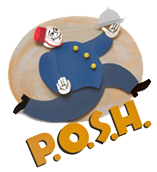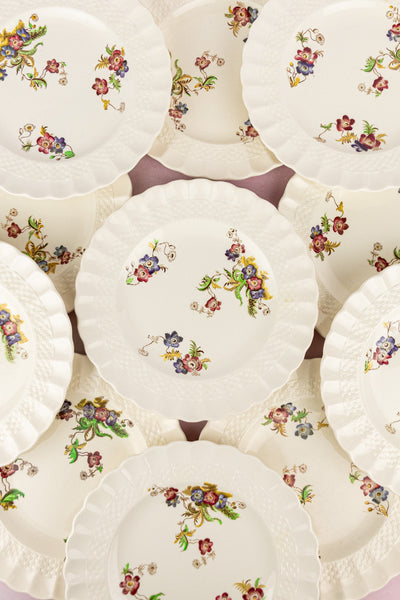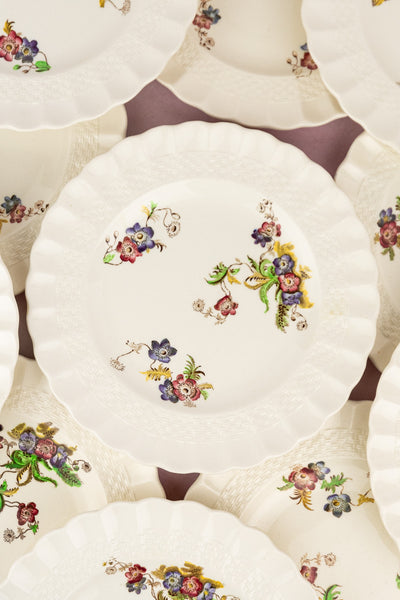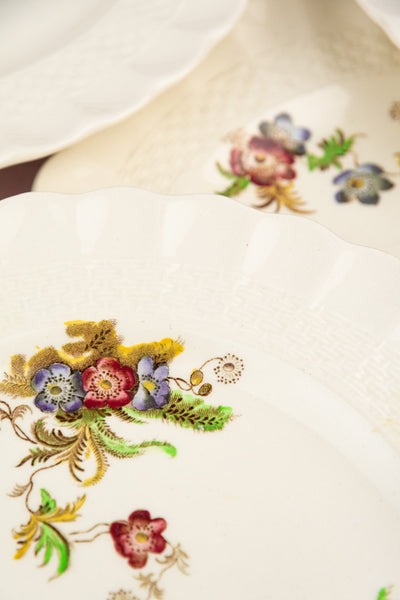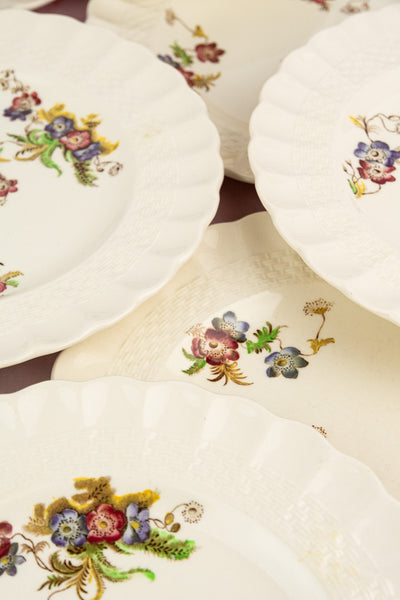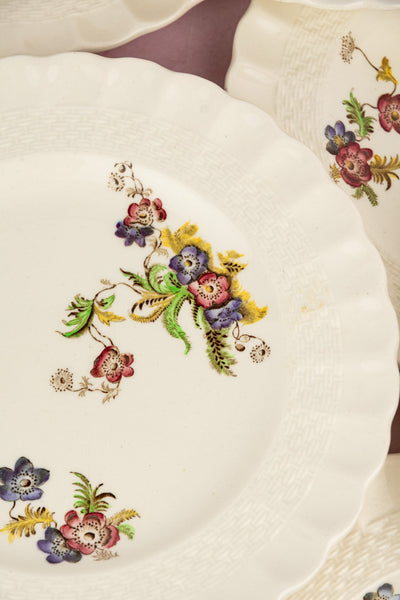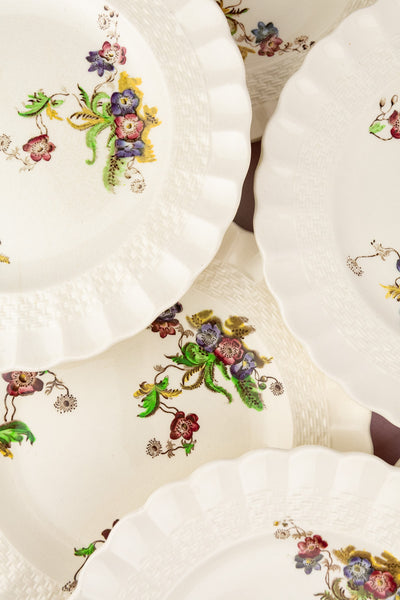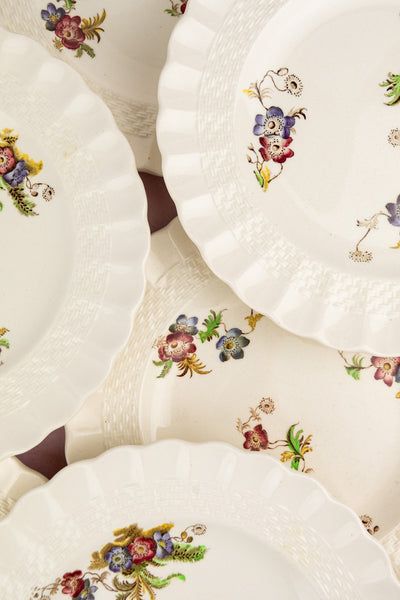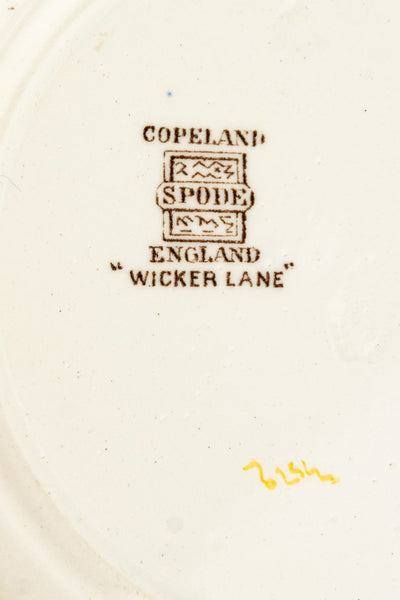Vintage Copeland Spode Dessert Plate - Set of 10
Vintage Copeland Spode Dessert Plate - Set of 10
$125.00
This lovely set of Copeland Spode Dessert Plates is sure to make your final course even sweeter. Covered in delicate hand-painted florals, each plate has been created with unique blooms of similar size and scale in order to blend seamlessly as a set. Produced in a scalloped plate style accented by an articulated basketweave rim, this classic Spode silhouette is known as the "Chelsea Wicker" shape.
First introduced in the 1921, this optimistic pattern of lively blooms is called Wicker Lane. With the dimensional movement of flowers playfully escaping from a hand-gathered posy and a regal color palette befitting the fine legacy and craftsmanship for which Spode has been prized for more than two and a half centuries, these plates are sure to brighten every occasion. From formal dinner to afternoon tea, this striking set is also ideal for a salad or cheese course. Promising to bring an evocative touch of romance to each table setting, this magnificent set is sure to become a cherished addition to your collection.
Strictly one-of-a-kind and subject to prior sale. Hand washing recommended. In very good condition. Plates measure 7.75" in diameter.
Learn More About Spode
While Josiah Wedgwood may be better known, he was born into a long established line of master potters, unlike Spode who rose from the most humble of beginnings to gain a notoriety that continues today.
Josiah Spode first learned his trade apprenticed at age 16 to the well-known potter Thomas Whieldon, the most accomplished of Staffordshire’s mid-18th century manufacturers. Whieldon’s endless curiosity and willingness to experiment had a profound impression on the young Spode, and from there he worked in several partnerships until he took a position as the head of the Works of Turner & Bank in the 1760s.
Spode China was formed in 1767 by Josiah Spode I, who became a visionary in business and tableware as popular "chinaware" from the Orient was becoming scarcer and Britain needed new sources for tableware. The factory, under the careful guidance of Josiah and his descendents, was responsible for two of the most important breakthroughs in English ceramics: first, the formula for bone china that is still used as well as the perfection of an "underglaze" printing process that is practiced to this day. Many intricate patterns could be applied to pieces without the worries of chipping, scratching and fading.
Delightfully little has changed since the Spode company first began producing English pottery in the 1700s. Its factory, still located in Stoke-on-Trent, is in operation today, and its methods of production have been modified only slightly. Transferware patterns continue to be created with handcrafted copper plates and hand-rubbed transfer sheets, and the earthenware is still made with ingredients that have been used since 1820.
Purchased by William Copeland and Thomas Garrett in 1833, the Spode brand mark was adapted to Copeland Spode and the company went on to vie with Minton in making some of the most spectacular ceramics wares of the Victorian age. The range produced during this period was enormous. Statues, busts, tiles, special orders for Royalty and Regiments, tableware of all types, ornamental vases, plaques, hotelware and souvenirs were all made. Much of the production was exported to Europe, the Empire and in particular to the United States. Between 1833 and 1900, around 35,000 new patterns were introduced – an average of ten new patterns every week with many continuing into the 20th Century.
